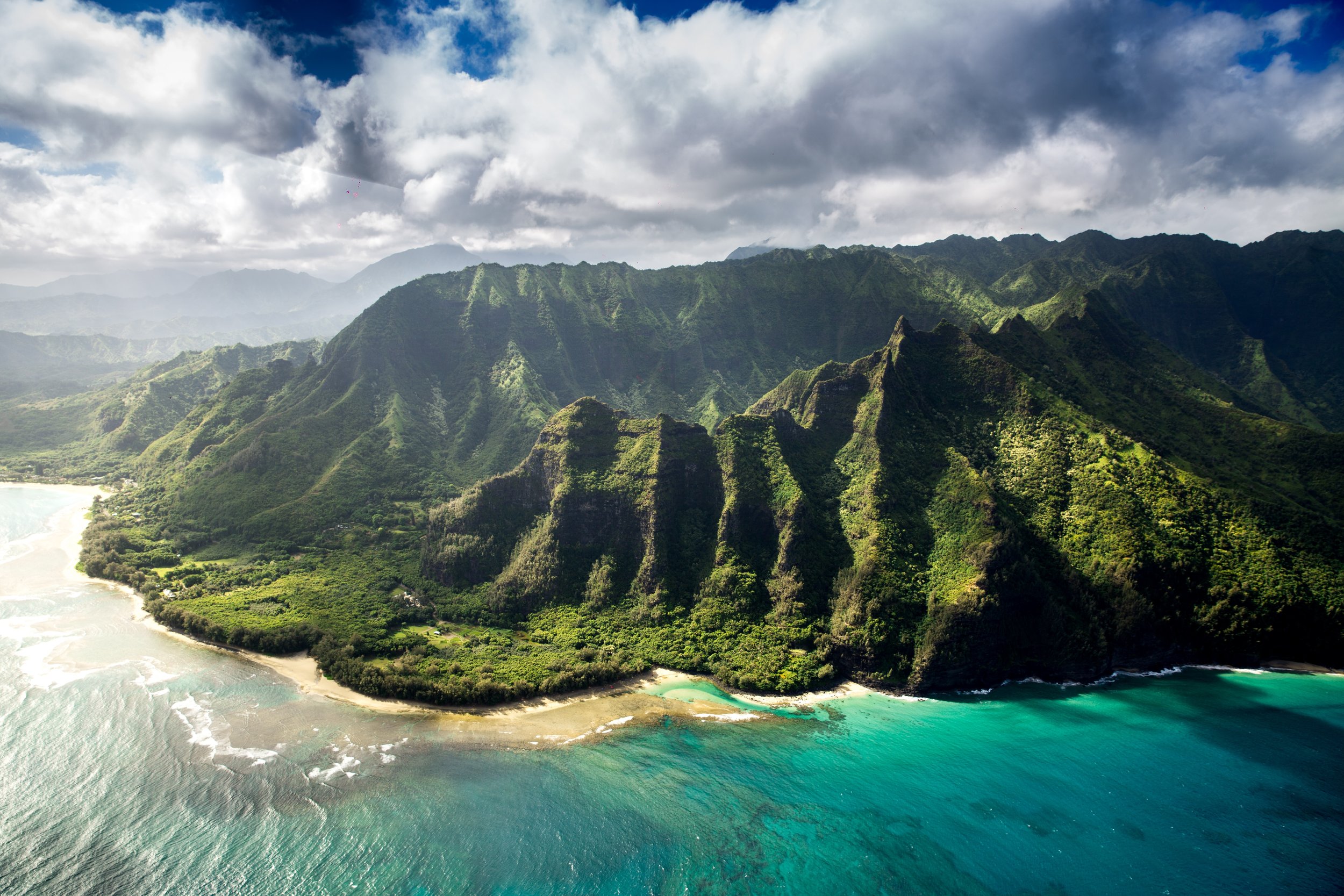3 Reasons Why Traveling to Hawai’i Is Not Sustainable
Photo by Braden Jarvis on Unsplash
When the Covid-19 pandemic first took the world by storm, billions of people were forced to change the way they lived nearly overnight. Those of us who were able to stay at home, did so. We wore masks in public, stayed six feet apart from strangers at the grocery store and put off birthday parties, weddings and funerals indefinitely. Staying home—an absolute privilege—was still emotionally and mentally challenging. We logged onto social media to stay connected with friends and family only to find a curious phenomenon: there were plenty of people for whom nothing had changed. While we quarantined alone, delayed grad programs, struggled with rent and student loan debt, others packed suitcases and took advantage of low cost fares to places like Hawai’i.
Hawai’i, especially, seemed to attract plenty of visitors. Pre-pandemic, in 2019, the state of 1.5 million people hosted a record 10.4 million visitors—unsustainable figures that left many residents feeling sour. There were an average of 190,491 visitors per day in May 2021—a slight decrease from a record high of 228,768 per day in May 2019. Many tourists were eager to escape lockdown restrictions at home for an “island paradise” and luxury travel accommodations—seemingly without a thought to how their vacation would impact Native Hawaiians already dealing with water shortages, an affordable housing crisis, a skyrocketing cost of living and vulnerable community members—fallout from decades of unethical tourism. Make it make sense people!
It’s now been two years since the start of the pandemic and Hawai’i Governor David Ige is still asking travellers to postpone nonessential travel. Native Hawaiians are flat out saying “don’t come here” and yet mainlanders—including other people of color, continue to book tickets and plan their perfect “tropical vacation” under the guise of “self-care.” In case you’re still not convinced that this request applies to you, here are three reasons why traveling to Hawai’i (at the present moment) is neither ethical nor sustainable.
Spreading disease is a public health concern
I can’t believe this needs to be said. Over 800,000 people in the U.S. have passed away due to the coronavirus. We’ve watched as the virus has overwhelmed city and rural hospital systems. We’ve seen the photos of refrigerated trucks parked outside county morgues and tearful goodbyes posted to TikTok and Instagram. Even now, as the news is filled with reports of yet another highly transmissible variant, non-Hawaiians are still making plans to visit Hawai’i and make life a living hell for its residents and Indigenous people.
Oh wait, we’ve been here before, haven’t we? In 1778, Captain James Cook came to the Hawaiian Islands and introduced a slew of diseases like measles, syphilis that led to a sharp decline in population. Disease warfare was just the beginning of a long history of oppression that included the 1893 invasion of Hawai’i by U.S. Marines and the illegal annexation of the country in 1898.
With hospitals having reached full capacity and intensive care units filling up as of August this year, residents of Hawai’i can no longer sustain the care and support needed for its residents and Indigenous people to continue living in a safer manner. “To be frank, there is never an ethical time to vacation in Hawai'i'', said Kayla Kuboyama, director of Price of Paradise in a recent Instagram post. “Tourism has countless negative impacts on Hawai’i, its people, and the natural resources that have come to give us this title of ’paradise.‘”
The influx of tourists is causing many to feel that “mainlanders” don’t feel sympathy for all those who have lost loved ones. “Ohana” based on the value of family is deeply rooted in Hawaiian culture. When you live with extended family under one roof, losing a member can rattle the foundation. “Especially during a global pandemic, vacationing in Hawai’i means a higher risk of exposure for our aging community,'' Kuboyama explained.
Multigenerational households are very common in Hawai’i. The U.S. Census Bureau ranks Hawai’i as the first in the U.S. for most multigenerational families sharing a roof. Having their livelihood jeopardized because hundreds of people want to spend “quality family time” puts a halt to the stories told and moves them to the memories of those survived by living relatives.
2. There’s not enough natural resources and housing to go around
As tourists continue to enter Hawai’i, residents are also getting fed up with the water shortages. Overtourism is keeping Maui residents from watering their lawns, washing cars, irrigation and other nonessential activities. Doing so could result in a $500 fine. Instead, hotel pools are being filled to the brim This isn’t the first time that Hawaiians have had to protest against the exploitation of their natural resources.
According to SFGate, Maui’s water diversions were created after colonization to favor big agriculture, particularly the sugar industry in drier regions. Beyond upending Hawaiians’ sustainable subsistence culture, it led to several years of fighting to have water restored back to streams, loi kalo and fisheries, as the depleted water sources severely impacted their livelihoods and food sovereignty.
This is making Hawaiians feel as if they are second-class citizens. They are not able to utilize their water for “nonessential activities” because of the need to support luxury nonessential travel for tourists. Make this make sense. An influx of tourists is also exacerbating the housing crisis that has left many Native Hawaiians homeless. “Increased housing prices make remote workers want to pay top price while Native Hawaiians face homelessness in their own homeland”, said Kuboyama. I can see why the anger is causing many in the tourism and service industries to lose their patience with tourists, especially when tourists with bad behaviors come with unrealistic expectations.
3. Lessen the load for Hawaiian Tourism Industry
The pandemic isn’t going away any time soon and with visitors who came in likely to remain in 2022, patience can’t be tested enough. Many in the tourism industry have been working hard to educate tourists on the state's deep cultural significance and environmental preservation. “Malama” or caring for the land is a new concept that Hawaii Tourism Authority launched a campaign in conjunction with Hawaii Tourism USA.
Considered a sister value to “Ohana,” programs like Malama are helping tourists be mindful of their surroundings. As of today, the program has over 100 airline and hotel partners which have all committed to rewarding guests with a free night’s stay if they spend a day helping to clean beaches or reforest land.
Currently Oahu is lobbying for the establishment of a regenerative tourism fee that would apply to all arriving tourists and directly support conservation and environmental management programs. “Pristine Paradise Environmental fee” is a model that many believe can be the future of sustainable tourism.
If you are invited to someone’s home, as a guest you are expected to treat their residence as your own. Come in peace and leave in peace. From individual responsibility to picking up PPE masks found across coastlines and beaches to supporting Hawaiian activism against the U.S. Navy and other federal and corporate entities, Malama is a concept that can spread to the far reaches of the mainland. Take the time to learn about Hawaiian culture, what concerns the people of Hawai’i have and how to support their social and environmental initiatives to care for their land.
End Hate In Hawai’i known on Instagram for spreading awareness of hate, injustice and white supremacy has graciously shared various resources on Hawaiian history, culture, and the negative impacts tourism has had on the Native Hawaiian population.
Since I can remember, I’ve always wanted to go to Hawai’i. It’s home to 10 climate zones, the Shangri La, and a beautiful variety of flora and fauna that has captivated the world. Measures towards sustainability are being thought of and put into practice for Native Hawaiians and visitors to live in accordance with one another. Although these measures are commendable, the best advice I’d recommend is to stay away.











Feeling sad? Having trouble getting out of bed? Playing Syd or girl in red on repeat? You may be navigating your first WLW heartbreak.